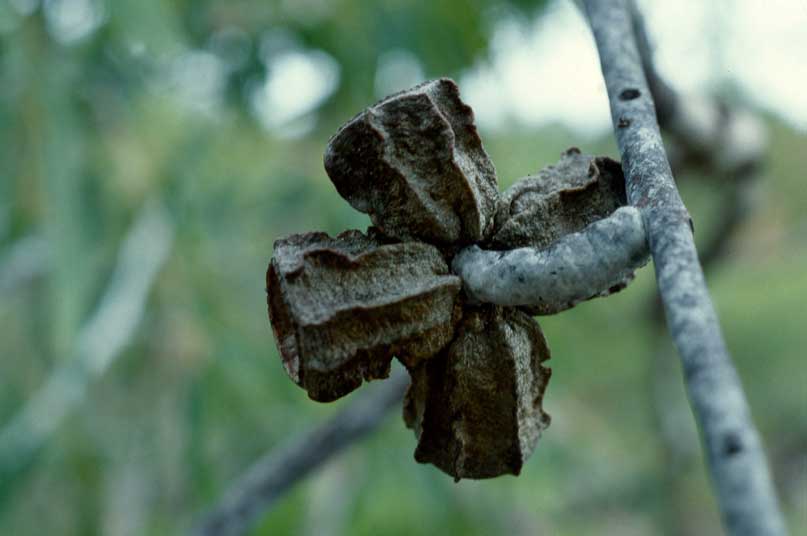Eucalyptus miniata on:
[Wikipedia]
[Google]
[Amazon]


 ''Eucalyptus miniata'', commonly known as the Darwin woollybutt or woolewoorrng, is a species of medium-sized to tall tree that is
''Eucalyptus miniata'', commonly known as the Darwin woollybutt or woolewoorrng, is a species of medium-sized to tall tree that is


 ''Eucalyptus miniata'', commonly known as the Darwin woollybutt or woolewoorrng, is a species of medium-sized to tall tree that is
''Eucalyptus miniata'', commonly known as the Darwin woollybutt or woolewoorrng, is a species of medium-sized to tall tree that is endemic
Endemism is the state of a species being found in a single defined geographic location, such as an island, state, nation, country or other defined zone; organisms that are indigenous to a place are not endemic to it if they are also found els ...
to northern Australia. It has rough, fibrous, brownish bark on the trunk, smooth greyish bark above. Adult leaves are lance-shaped, the flower buds are ribbed and arranged in groups of seven, the flowers orange or scarlet and the fruit is cylindrical to barrel-shaped or urn-shaped, with ribs along the sides.
Description
''Eucalyptus miniata'' is a tree that typically grows to a height of , sometimes as tall as , usually with a single trunk, and forms a lignotuber. The bark is soft, rough, fibrous and fissured, grey to red-yellow-brown in colour on the trunk with white to pale grey smooth bark on the upper trunk and branches. Young plants and coppice regrowth have greenish-brown leaves that are elliptical in shape, long and wide. Adult leaves are dull to slightly glossy green, paler on the lower surface, lance-shaped to curved, long and wide. tapering to a petiole long. The flower buds are arranged in groups of seven on an unbranchedpeduncle Peduncle may refer to:
*Peduncle (botany), a stalk supporting an inflorescence, which is the part of the shoot of seed plants where flowers are formed
*Peduncle (anatomy), a stem, through which a mass of tissue is attached to a body
**Peduncle (art ...
long, the individual buds sessile or on pedicles up to long. Mature buds are club-shaped, rarely spindle-shaped, glaucous, long and wide with ribs along the sides and a rounded to conical operculum. Flowering occurs from May to September and the flowers are orange or scarlet and up to in diameter. The fruits are woody, cylindrical to barrel-shaped or urn-shaped capsules long, wide and have longitudinal ribbing with the valves enclosed below the level of the rim. The fruits are glaucous at first but lose that covering over time and contain seeds that are dark grey to black, long with an obliquely pyramidal to flattened cuboid shape.
Taxonomy and naming
The species was first formally described by the botanistJohannes Conrad Schauer
Johannes Conrad Schauer (16 February 1813 – 24 October 1848) was a botanist interested in Spermatophytes. He was born in Frankfurt am Main and attended the gymnasium of Mainz from 1825 to 1837. For the next three years he worked at the Hofgar ...
in 1843 in Wilhelm Gerhard Walpers work ''Repertorium Botanices Systematicae'' from an unpublished description by Allan Cunningham. The species name ''miniata'' is Latin
Latin (, or , ) is a classical language belonging to the Italic branch of the Indo-European languages. Latin was originally a dialect spoken in the lower Tiber area (then known as Latium) around present-day Rome, but through the power ...
meaning ''flame-scarlet'' referring to the colour of the filaments of the flowers. The Miriwoong people of the Kimberley
Kimberly or Kimberley may refer to:
Places and historical events
Australia
* Kimberley (Western Australia)
** Roman Catholic Diocese of Kimberley
* Kimberley Warm Springs, Tasmania
* Kimberley, Tasmania a small town
* County of Kimberley, a ...
call the tree ''woolewoorrng''.
Distribution and habitat
''Eucalyptus miniata'' is commonly found in open forest, savanna communities and on sandstone escarpments, growing in sandy soils. It is widely distributed from theKimberley
Kimberly or Kimberley may refer to:
Places and historical events
Australia
* Kimberley (Western Australia)
** Roman Catholic Diocese of Kimberley
* Kimberley Warm Springs, Tasmania
* Kimberley, Tasmania a small town
* County of Kimberley, a ...
region in Western Australia and through northern parts of the Northern Territory to the Burketown
Burketown is an isolated outback town and coastal locality in the Shire of Burke, Queensland, Australia. In the , the locality of Burketown had a population of 238 people.
It is located west of Cairns and west of Normanton on the Albert ...
region of far northwestern Queensland
)
, nickname = Sunshine State
, image_map = Queensland in Australia.svg
, map_caption = Location of Queensland in Australia
, subdivision_type = Country
, subdivision_name = Australia
, established_title = Before federation
, established_ ...
. It occurs in the Arnhem Coast, Arnhem Plateau
The Arnhem Plateau, an interim Australian bioregion, is located in the Northern Territory of Australia,Central Kimberley, Daly Basin, Darwin Coastal, Einasleigh Uplands,
Image:Eucalyptus Miniata Flowers (18950101703).jpg, flowers on a tree near Humpty Doo
Image:Eucalyptus miniata from "Eucalyptographia. A descriptive atlas of the eucalypts of Australia and the adjoining islands"; (1879) (20165942804).jpg, illustration from ''Eucalyptographia''
Gulf Coastal
The Gulf Coastal, an interim Australian bioregion, is located in the Northern Territory,IBR ...
, Gulf Fall and Uplands, Gulf Plains, Northern Kimberley, Ord Victoria Plain, Pine Creek, Tiwi Cobourg, and Victoria Bonaparte bioregions.
Ecology
Red-tailed black cockatoos living in the north of Australia prefer feeding on the Darwin woollybutt.Conservation status
''Eucalyptus miniata'' is classified as "not threatened" in Western Australia by the Western Australian GovernmentDepartment of Parks and Wildlife
The Department of Parks and Wildlife (DPaW) was the department of the Government of Western Australia responsible for managing lands described in the ''Conservation and Land Management Act 1984'' and implementing the state's conservation and en ...
.
See also
* List of ''Eucalyptus'' speciesReferences
{{Taxonbar, from=Q2713279 Myrtales of Australia miniata Trees of Australia Eucalypts of Western Australia Flora of the Northern Territory Flora of Queensland Plants described in 1843